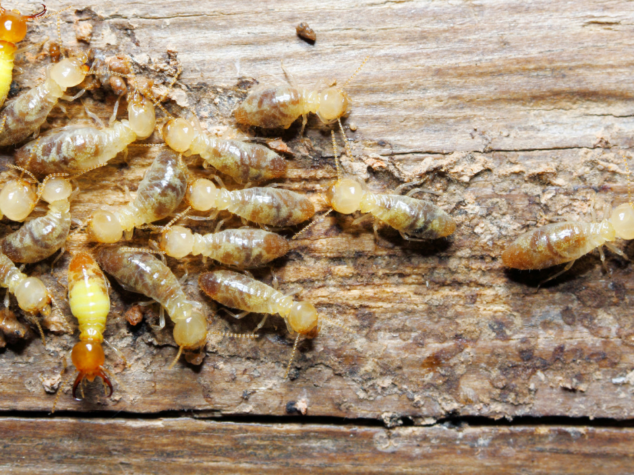As temperatures rise, so does the risk of termite infestations.
Spring marks the beginning of termite season when these destructive pests swarm, looking for new places to establish colonies. If left unchecked, termites can cause extensive structural damage to homes and businesses, leading to costly repairs.
When is Termite Season?
Termites are active year-round, but spring and early summer are when swarming termites emerge to reproduce and start new colonies. The combination of warmer temperatures and increased humidity creates ideal conditions for termite activity.
Signs of a Termite Infestation
Catching a termite problem early can save you thousands of dollars in repairs. Here are the most common signs to watch for:
1. Swarming Termites (Flying Termites)
During termite season, reproductive termites (swarmers) leave their colonies to find new nesting sites. If you see flying termites around your windows, doors, or outdoor lights, it could indicate a nearby infestation.
Tip: Swarmers are often mistaken for flying ants. Termites have straight antennae, equal-sized wings, and a thick waist, while ants have bent antennae, uneven wings, and a narrow waist.
2. Discarded Wings
After swarming, termites shed their wings. Finding small, translucent wings near windowsills, door frames, or baseboards is a strong sign of a growing infestation.
3. Mud Tubes on Walls and Foundations
Subterranean termites build mud tubes to protect themselves while traveling between their colony and food source. These pencil-thin tunnels can often be seen along foundations, walls, or crawl spaces.
4. Hollow or Damaged Wood
Termites eat wood from the inside out, making damage hard to detect until it’s severe. Tap on wooden surfaces—if they sound hollow or feel soft, termites may be feeding inside. Peeling paint and buckling wood can also indicate hidden damage.
5. Frass (Termite Droppings)
Drywood termites leave behind tiny, pellet-shaped droppings (frass) that resemble sawdust. These are often found near infested wood, window sills, or baseboards.
6. Tight-fitting doors and Windows
Termite damage can cause wood to warp, making doors and windows difficult to open. If you’re struggling with sticky doors or windows and notice other signs of termites, it’s time for an inspection.
How to Protect Your Home from Termites
1. Eliminate Moisture Around Your Home
Termites thrive in humid environments. Reduce moisture by:
- Fixing leaks in pipes, faucets, and air conditioning units.
- Ensuring proper drainage and keeping gutters clean.
- Using a dehumidifier in basements and crawl spaces.
2. Remove Wood-to-Soil Contact
Since termites travel through soil, keeping wood away from direct contact with the ground is crucial. Prevent infestations by:
- Storing firewood, lumber, and mulch at least 20 feet away from your home.
- Using concrete or metal supports for decks and wooden structures.
- Keeping soil at least 6 inches below wooden siding.
3. Seal Entry Points
Close gaps and cracks where termites could enter:
- Caulk around windows, doors, and foundation cracks.
- Install screens over vents and attic openings.
- Repair damaged roofing and siding.
4. Schedule Regular Termite Inspections
A professional termite inspection can detect early signs of infestation before major damage occurs. Experts use advanced tools to locate hidden termite activity and provide customized treatment plans.
5. Consider Preventative Termite Treatments
If you live in a termite-prone area, preventative treatments can protect your home long-term. Common options include:
- Soil Treatments – Applying liquid termiticides to create a barrier around your foundation.
- Bait Stations – Using slow-acting bait to eliminate termite colonies.
- Wood Treatments – Treating wooden structures with borate-based solutions to repel termites.
What to Do if You Have Termites
If you suspect termites, don’t wait—damage can escalate quickly. Contact a licensed pest control company to conduct a thorough inspection and recommend the best course of action.
We can help make unwanted pests a thing of the past. With a pest invasion, time is often of the essence — contact Complete Pest Solutions today for all your pest extermination and removal needs in East Columbus, and our team will be out to help promptly!

